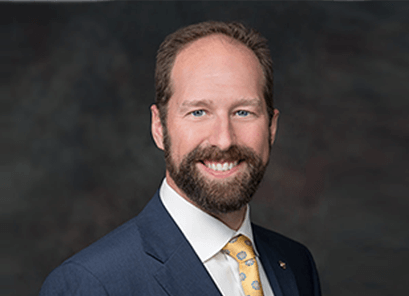You’re Over-Complicating Your Fee Schedule
When people are looking for a financial advisor, they don’t ask what fee schedule he uses. No, they ask who’s the best, then figure out how to pay him.
4 min read

Financial Planner, CFP®
“This all looks good, but how much do you charge?”
If you choke and answer, “Well, that depends,” while handing over a complicated tiered fee structure in eight-point font—you’ve just lost that client.
When advisors can’t answer the fee question with confidence, they’ve eroded all of their client’s trust. As an advisor, you should be proud of the fees you charge; it should reflect the massive value you offer your clients.
You’ve got a problem if you can’t state your fees with the same certainty you use when introducing yourself.
Establishing a fee structure is a hot-button topic in our industry—and it shouldn’t be. When people are looking for a financial advisor, they don’t ask what fee schedule he uses. No, they ask who’s the best, then figure out how to pay him.
Attract first-class clients with a first-class experience.
You need to set your fees from a business perspective: based on your individual practice and your individual goals.
Many FAs look at what their competition is doing and base their fees a little lower, thinking that they can get clients this way. But this isn’t the right approach. Prospective clients aren’t looking for the cheapest financial advisors—they want the best. And you can’t live on bottom-of-the-bucket fees either.
You must set your rates to attract first-class clients and deliver a first-class service experience. Let me explain:
You’ll hear on our podcast that we frequently recommend building your business so you can travel first-class. Sure, you’ll get to the same place at the same time as the person in economy, but you’re willing to pay thousands of dollars more for a better experience.
As a business, there’s no way you can compete with the economy class client pool, so you shouldn’t.

You need to set up your practice to offer a first-class experience: specialize your practice and cater to the clients willing to pay your fees. Then, back your fees by providing massive value.
There are 7 billion people in this world—you only need 100 to 200 clients who are voluntarily willing to pay your rates for the specialized advice you deliver.

But how do you decide what your fee schedule will be?
Disciplined-based systems always fail. We see it every day in crashed diets and unsuccessful workout routines. Ask yourself, do you really have the courage to stick to your guns regarding your fees in a meeting?
If you need to mull over your rate when asked or cave when asked for discounts—you need to establish a fool-proof business plan. Set your plan in stone, so your answer becomes automatic.
How do you make your plan automatic? You make it simple. I mean, really simple—it should fit on a post-it note—none of this eight-point font, multiple tiers crap we see from so many advisors.
Here’s what I mean:
Let’s say you’re bringing in $350,000 in gross revenue and have 100 clients—making a relationship average of $3,500 per client.
You want to make $500,000 next year and bring on an additional 20 clients.
To increase your revenue by $150,000 next year, you need to charge your new clients $7,500 each for your financial planning fee or AUM.
Next, you just need to justify the value you’re bringing to the table and show that you’re increasing their return from your fee. Then, during your quarterly meetings, point out everything you’ve been able to grow for them from that fee—and be candid about it.
Once you decide on your fee, engrave it in stone—your rate is non-negotiable. Write it on a post-it note and laminate it. Tape it next to your computer screen; it’s always there when you’re working. Write it on the bathroom mirror so that when you get ready in the morning, you can practice saying, “My name is Micah, and I charge x.”
It doesn’t matter how your rates compare, so long as you can back it up by delivering massive value to your clients.
Raising your fees benefits your clients.
If you’re running a crappy business, are you doing what’s best for your clients? They’re trusting you to be around for the next twenty years. Are you running your practice so you can be?
Successful businesses are constantly expanding and growing, and your practice should be too. You grow by raising costs, increasing efficiency, and bringing in more revenue. By increasing your fees, you become a solvent business—you’ll be stable and able to serve your clients for the foreseeable future.
Raising your existing clients’ rates is another way to increase your revenue to meet your goals. If you choose to do this, make sure you raise your fees real. Be clear in stating to your clients what your rate will be and be proud of the value you provide.
Those clients who weren’t ideal will leave, but you’ll still come out ahead. Fewer clients and more revenue will allow you to focus on the remaining clients and provide even better overall service agreements. That’s a win-win for everyone.
Happy Planning!
Action item
Reading this blog post is pointless if you don’t implement what you learned. Block out some time to write a business plan. Include what you’re making now (gross revenue) and your number of clients. Then figure out where you want to be next year, and crunch the numbers to find how much you need to charge.
Congratulations—that’s your new service fee! Write it on a post-it note, frame it, and place it where you’ll see it daily. Practice saying your new fee so you can confidently say it during a meeting.
Popular Topics
Value Adds
If you are routinely providing clients with value adds in a consistent, efficient, and deliverable
Still Holding Out on Surge™? 2023 Could Be Your Year
Micah Shilanski, CFP®, busts myths and misconceptions surrounding Surge meetings and shows how
Is That OK With You?
One of the most significant differences between ‘good’ advisors and rock-star level advisors is
Like Coke from a Coffee Mug: Run Your Best Client Meeting
Client meetings can be a dreaded part of a routine or you and your clients’ favorite part of your
5 Questions Every Advisor Should Ask
Matthew Jarvis, CFP®, answers five essential questions every advisor should ask to transform
What You Should
READ NEXT
Stop Stressing About Raising Fees – We’ve Got You Covered
Raising fees can feel nerve-wracking—palms sweaty, mind racing, worrying if clients will walk away. But with the right approach, it’s an opportunity to strengthen relationships by clearly communicating the value you bring. That’s why we created a foolproof fee-increase letter to make these
Why You Should Never Apologize for Raising Your Fees
Matthew Jarvis, CFP®, answers five essential questions every advisor should ask to transform meetings from mundane to meaningful, uncovering clients' true priorities and
Value Adds
If you are routinely providing clients with value adds in a consistent, efficient, and deliverable manner, the fear and doubt surrounding whether or not you're worth what your charge begins to
Start the change today!
Get our 3 most popular power sessions FREE. You and your team will learn about: Time Blocking, the One Page Financial Plan, and the “Buckets of Money” approach.



